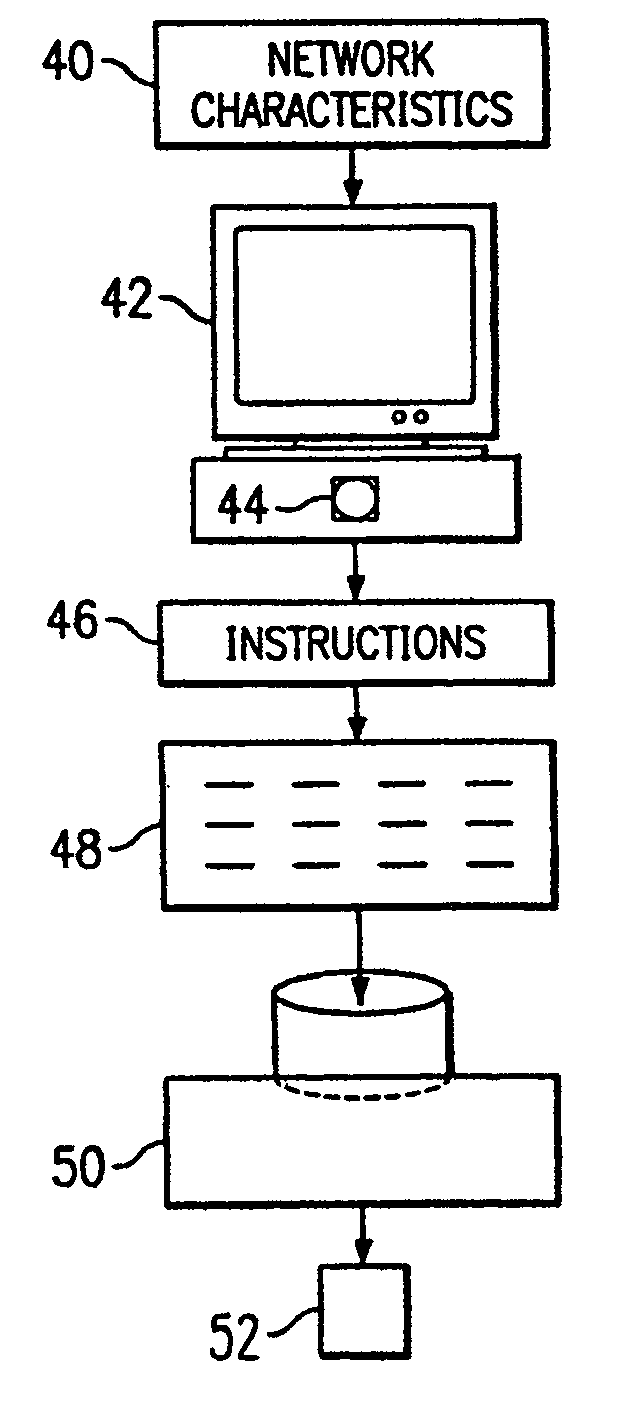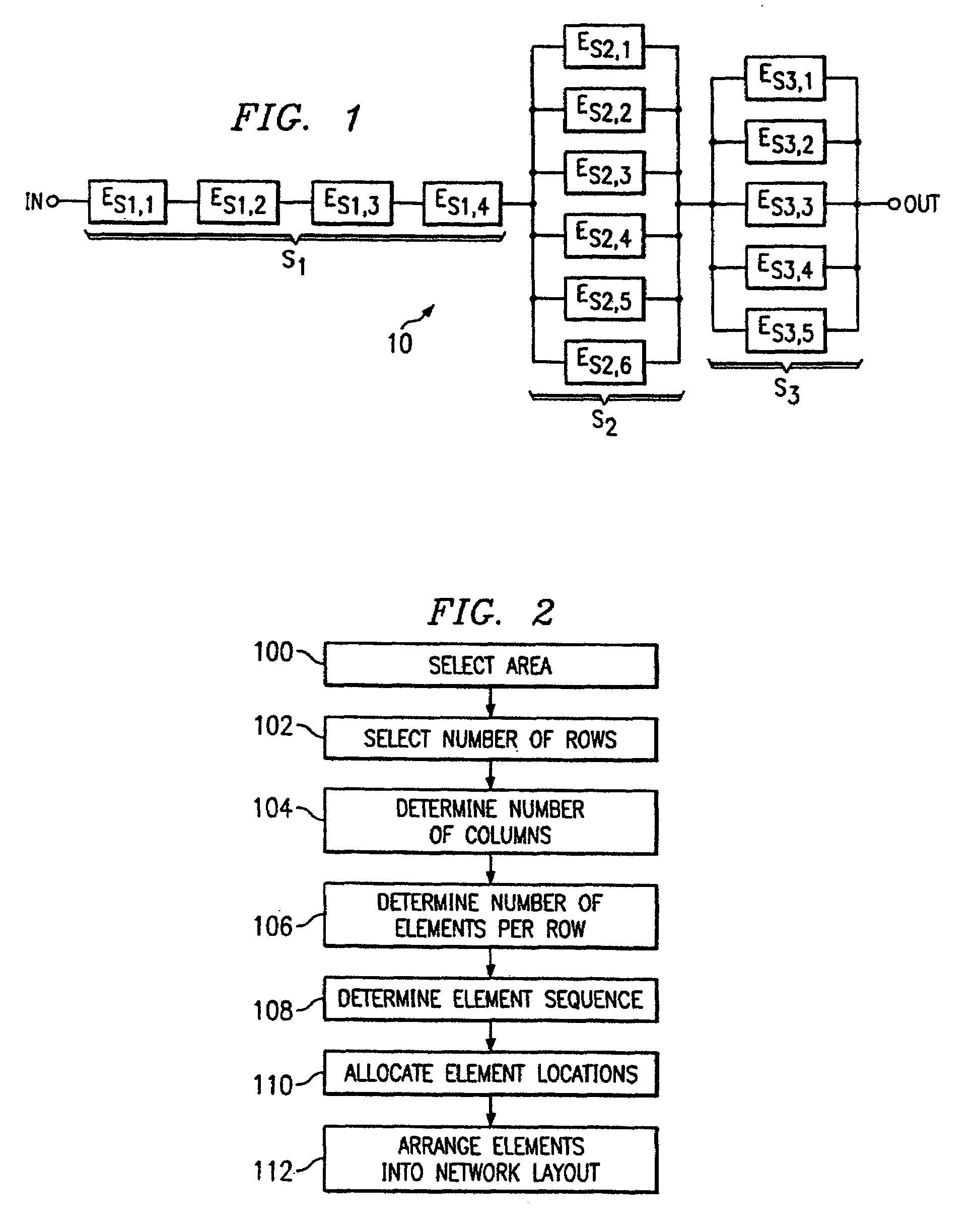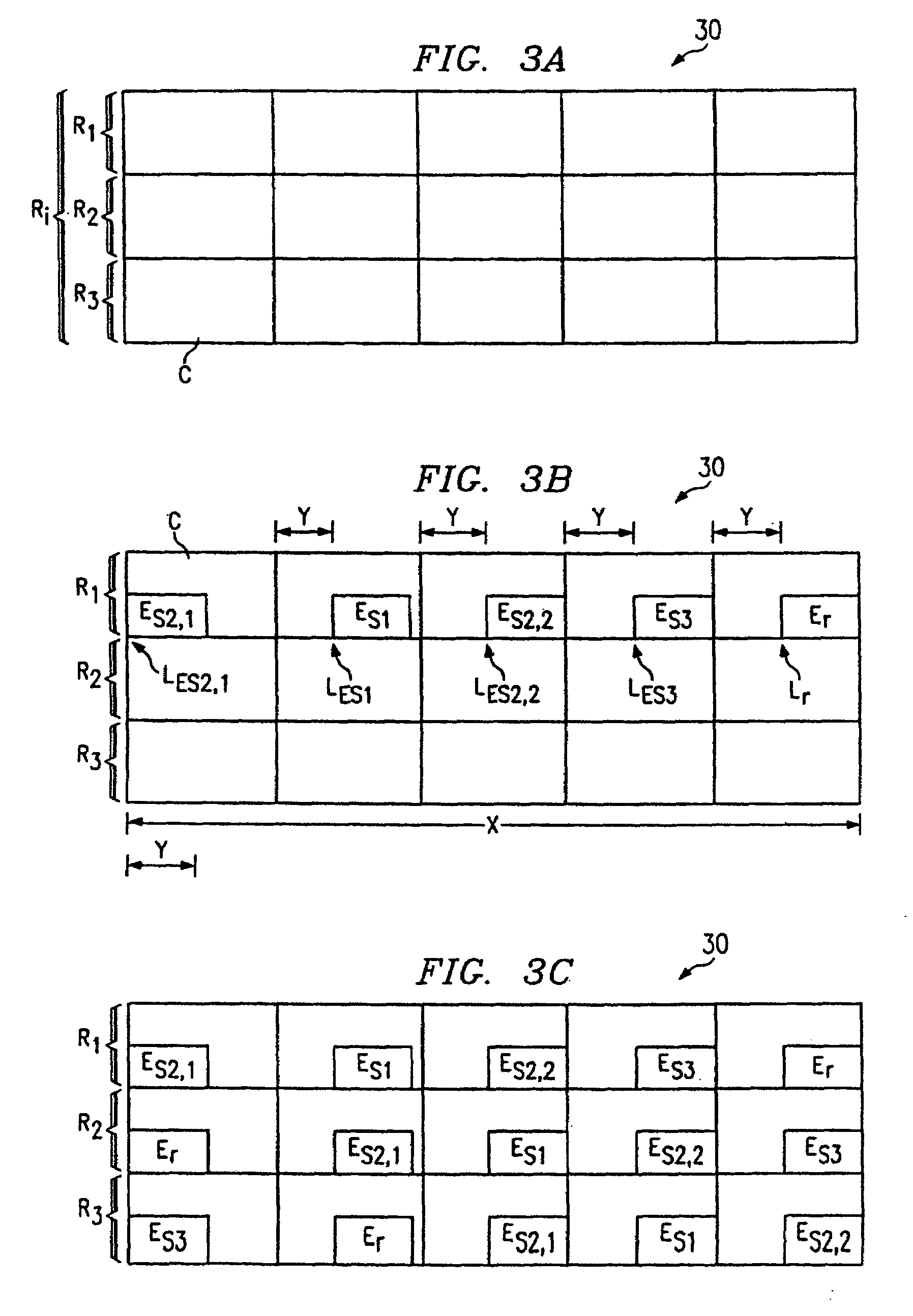Layout of network using parallel and series elements
a network and series element technology, applied in the field of system, method and algorithm for layout of networks with parallel and series elements, can solve the problems of complex problem, difficulty in laying out physical networks, and difficulty in implementing networks using multiple identical elements, so as to reduce tedium, improve efficiency and consistency in network layout, and save time
- Summary
- Abstract
- Description
- Claims
- Application Information
AI Technical Summary
Benefits of technology
Problems solved by technology
Method used
Image
Examples
Embodiment Construction
[0020]The invention provides for the systematic layout of a network in a combination of series and parallel elements. The invention may be used for networks which can be expressed in terms of a cross-quantity divided by a through-quantity such as, for example, an electronic network in which by Ohm's law, resistance is the quotient of voltage divided by current. Although for the sake of example the invention is described in terms of electronic resistor networks, it should be understood that the algorithms, methods, and systems described are applicable to other electrical and mechanical networks, such as a network of inductors, field effect or bipolar transistors, or fluid pumps, without departure from the concepts of the invention.
[0021]Given a particular network resistance value, there are a very large number of possible implementations using various numbers of various sizes of individual resistor elements. In the implementation of physical networks, engineering considerations narro...
PUM
 Login to View More
Login to View More Abstract
Description
Claims
Application Information
 Login to View More
Login to View More - R&D
- Intellectual Property
- Life Sciences
- Materials
- Tech Scout
- Unparalleled Data Quality
- Higher Quality Content
- 60% Fewer Hallucinations
Browse by: Latest US Patents, China's latest patents, Technical Efficacy Thesaurus, Application Domain, Technology Topic, Popular Technical Reports.
© 2025 PatSnap. All rights reserved.Legal|Privacy policy|Modern Slavery Act Transparency Statement|Sitemap|About US| Contact US: help@patsnap.com



